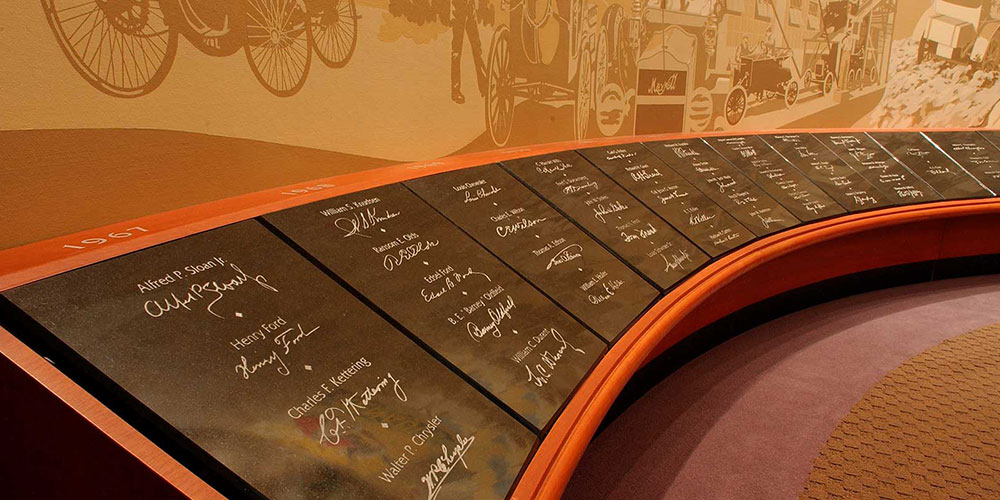By Robert Tate, Automotive Historian and Researcher
Images courtesy of The National Automotive History Collection
Posted: 08.27.2017
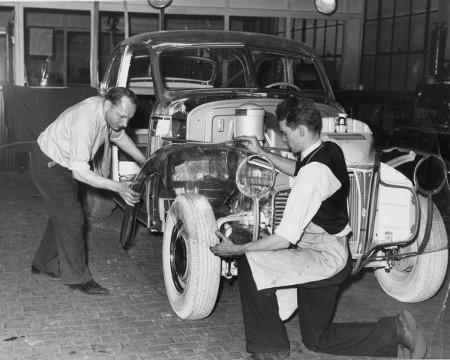 Workers constructing the 1939 Pontiac Ghost Car.
Workers constructing the 1939 Pontiac Ghost Car.
By 1939, America’s domestic automotive industry had started to truly mature among the middle class with many families now owning at least one car. Looking to capitalize on the upward mobility of the consumer market, General Motors commissioned designer Norman Bel Geddes to build a unique automotive display for the famed 1939-1940 New York World’s Fair - something that would capture people’s attention.
The display was called, “Highways and Horizons,” and it focused on how automotive was going to help move the country forward. It was something that people had talked about for years after the conclusion of the World’s Fair. Bel Geddes worked with the late artist Dean Cornwall who had designed the great looking mural that was a part of the fantastic looking display.
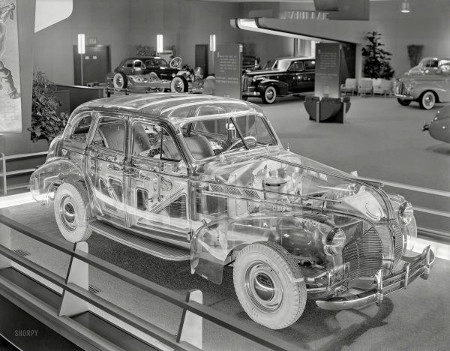
Another GM-commissioned display that turned heads during the World’s Fair was Pontiac’s highly unique all-Plexiglass 1939 show car, also known as the Ghost Car. The Ghost Car would later find its place among some of the more innovative pieces comprising Pontiac’s great automotive heritage. Later, the car would make the rounds for the company for special events and promotions.
The model was constructed of 100 percent acrylic plastic, and based on the De Luxe Six four-door Touring Sedan with the six-window styling features. The show car cost $25,000 to construct and was built by General Motors. Some automotive historians, however, have said that the Fisher Body Co., working in partnership with the chemical company that manufactured the Plexiglass material - Rohm and Haas - most likely built the Ghost Car body as a joint effort.
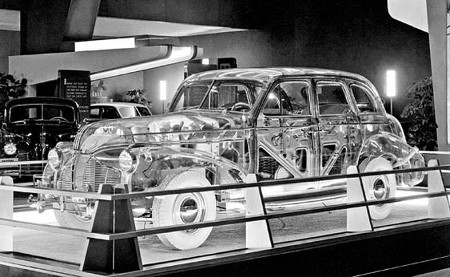
The special Plexiglas show car was great to see and admire because it is a part of our automotive history and culture, and most importantly the model still exists today recently selling for $308,000 at auction.
General Motors also constructed a second model for the 1940 Golden Gate Exposition display that many visitors thoroughly had enjoyed. Later, both show cars were shown and displayed at Pontiac dealerships nationwide. The highly unique show cars were loaned to the Smithsonian Institution shortly after the outbreak of WWII.
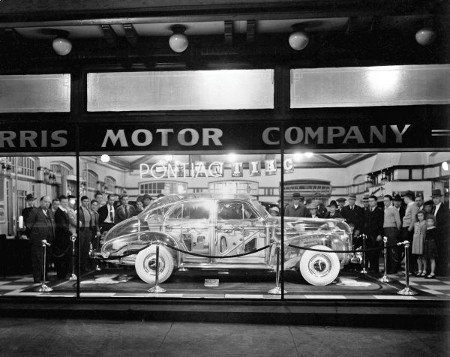
The original 1939 press release circulated by GM stated this about the highly unique show car, “A transparent motorcar, the first ever constructed in the United States, is the most striking of the Fisher Body Division exhibits at the GM Highways and Horizons building at the New York World's Fair...created to show the rigid interior bracing and other features complete with windows that can be raised and lowered, doors that can be opened and closed. The only material lacking being the insulation normally applied to the inner surface working with a new material, a synthetic crystal-clear plastic.”
The fully transparent bodies also showcased the inner workings of the vehicles, so as automotive enthusiasts were able to see all of the mechanical and engineering features of Pontiac-designed cars. The models had white rubber wheels along with white painted metal parts or parts that were plated in chrome, copper or nickel. The Pontiac show cars were used in many promotions and were often seen in national magazines. Pontiac Motor Division stated, “It shows at a glance the hidden value built into Pontiac cars.”
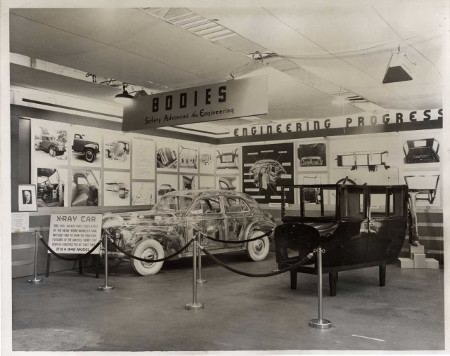
After its World’s Fair appearance the Smithsonian Institution kept the Pontiac show car on display from 1942-1947. By the late 1940s, however, the styling on the car had been deemed old and obsolete by the viewing public and the exhibit was changed. Later, the show car would be old and resold to a number of Pontiac dealerships - mostly for the promotional value. It first went to the H&H Pontiac dealership of Gettysburg, Pa.; and the in 1962, it was sold to another Pontiac dealership and later to a car collector by the name of Don Barlup.
In conclusion, some automotive historians have said that Pontiac’s Ghost Car is credited as the first transparent car in America. Today, this unique show car is still a very rare model and a great conversation story for many Americans.
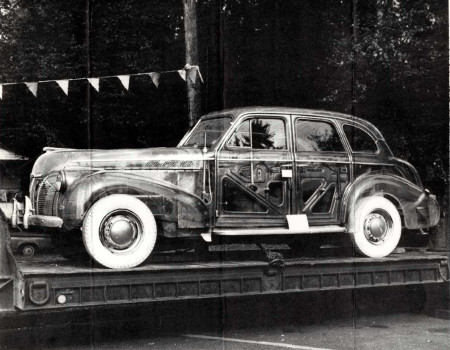
For further information on photos please visit http://www.detroitpubliclibrary.org/ or email This email address is being protected from spambots. You need JavaScript enabled to view it.. Please do not republish the story and/or photographs without permission of MotorCities National Heritage Area. (Bibliography: Bonsall E., Thomas. “Pontiac the complete history 1926-1986” 1985; Kinsel, Larry. The Pontiac Deluxe Six “Ghost Car” Generations of GM history; Gunnell, John. “75 Years of Pontiac Oakland” Crestline Publishing, 1982.)
If you would like to contribute an article for the MotorCities newsletter, email This email address is being protected from spambots. You need JavaScript enabled to view it. or call 313-259-3425.


